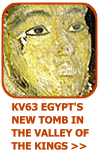|
|
|||||||||||||||||||||||||
|
|
One of the great "pillars" of the accepted chronology stems from the phenomenon known as sothic dating. The Egyptian year was divided into three seasons of Akhet (inundation, the Nile floods), Peret (the growing season) and Shemu (the drought season). These periods were in turn divided into four 30-day months, and each month had three 10-day weeks. The total number of days in these twelve months added up to a only 360-days, so the Egyptians added five epagomenal "days upon the year" (additional days) to bring their calendar up to the required 365 day year. However, the Egyptians apparently failed to include a leap year every fourth year to allow for the extra quarter day needed to bring the Earth back to exactly the same location in its annual orbit of the sun. This failure to add a leap year resulted in the Egyptian calendar slipping back behind the Earth's natural calendar by one day every fourth year. Star gazers
Because of the Earth's movement within its orbit, it means that the positions of the stars appear to alter in relation to our observation point on Earth. Therefore, even though the positions of the stars are fixed, they appear to arc across the sky and disappear from view below the horizon for periods of time.
The priest-astronomers noticed that this event seemed to coincide with the start of the inundation, and so the helical rising of Sirius became recognised as the start of the Egyptian civil calendar. When the civil calendar was first created, everything would have appeared to be fine for a couple of generations or so, but eventually the shortfall would have resulted in Sirius rising late. Just four years later, Sirius would already be rising a day late. Several centuries later, Sirius would be rising in the time of the planting season. In fact, it would be a period of 1461-years before Sirius would rise heliacally on the first day of Akhet once again. This 1461-year cycle has become known as the sothic year. If one sothic year had begun in AD 139, then the previous must have occurred in 1321 BC, and the one before that in 2781 BC. In the 1870's, a calendar was acquired at Thebes by Georg Ebers, the professor of Egyptology at Leipzig. This calendar, known as the Ebers Calendar was datable to the ninth year of Amenhotep I, and it recorded the heliacal rising of Sirius on the ninth day of the third month of Shemu. Textural records of sothic risings surviving from the reigns of Senusret III, Thutmosis III and the Ebers Calendar, now form the basis of the conventional accepted chronology of Ancient Egypt.
The importance of the temple >>
|
||||||||||||||||||||||||

|
|||||||||||||||||||||||||
|
|||||||||||||||||||||||||








